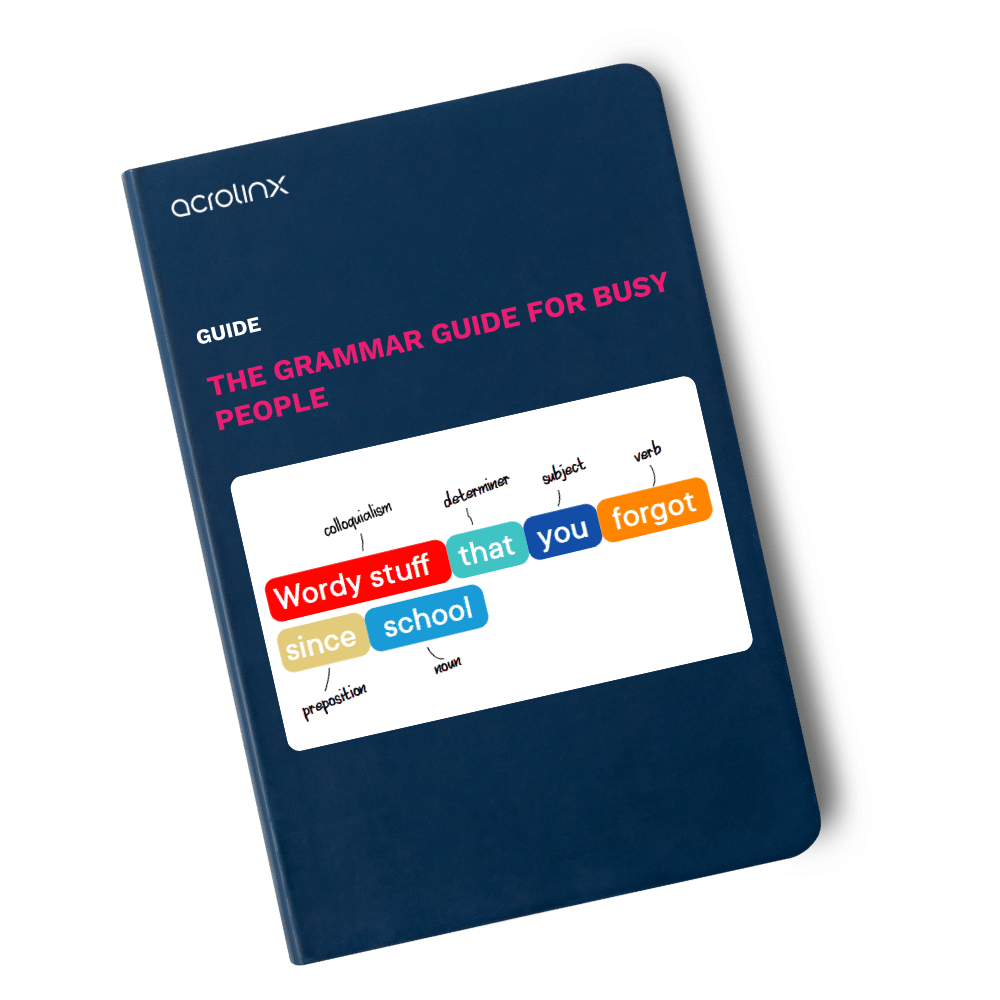
Why it’s time to cut out pesky writing errors
When content is part of your job — as it is for everyone who works at an enterprise — you need to take it seriously. You try to be the best writer that you can, creating content that’s interesting, engaging, and easy to read. And, as you hone your writing skills, you also start to develop something that can only be described as an allergic reaction to writing mistakes.
Admittedly, we all make mistakes when we write. Hopefully, by editing our content or running it through a review process, we spot and correct those mistakes so that we can deny our readers the chance of doing so for us. Unfortunately, not everyone who writes is good at writing. Likewise, not all writers are good at editing their own work, or have the luxury of a team of editors or content improvement software to catch their mistakes.
In this post, we’ve decided to rant about some of our biggest content pet peeves. These are common writing mistakes that we just don’t have any patience for.
Random capitalization: A common mistake
For some Reason, a lot of People tend to randomly capitalize Words when they write. More often than not, the Words they capitalize are Nouns, but beyond that there doesn’t seem to be any Rhyme or Reason as to what they capitalize or when.
Remember, there are only a handful of instances when you’re supposed to capitalize words, such as when they start a sentence or are a proper noun. (For a more comprehensive review of the rules, check out our Grammar Guide for Busy People.)
When in doubt, don’t capitalize. You’ll be right much more often than you’re wrong.
Avoid passive voice: Strengthen your content
Passive voice is when you make the object of an action the subject of a sentence. For example:
This blog post was clearly written by people with a low tolerance for writing mistakes. (passive)
People with a low tolerance for writing mistakes clearly wrote this blog post. (active)
Passive voice is frustrating because it’s, well, passive. In many cases, it’s also vague because it lets writers get away with not identifying who did what, as in the case of phrases like “words were exchanged” or “It has been said…” By whom?!?
While passive voice is generally something you should avoid, there are a few instances when it’s okay and even preferable to use, such as when you don’t actually know who’s responsible for the action. To learn more about passive voice and all of its do’s and don’ts, check out this great guide from the writing center at UNC-Chapel Hill.
Misusing quotation marks
Some people have a tendency to put random terminology in quotation marks, like in the sentence below:
Why do writers have “big ideas” about when to use quotation marks?
To be clear, random quotation marks are superfluous. Not only are they unnecessary, they can make your writing look pretty amateur. For a full list of when and how to use quotation marks correctly, and punctuation marks generally, check out this GrammarBook.com article.
The importance of correct punctuation
For some reason, punctuation is a real challenge for a lot of people. Issues with comma splices, semicolons and colons get confused, and people run amok with dashes and ellipses.
Think of punctuation as you would the spices that you add to a dish. Overuse them, and it will throw off the balance of flavors. Underuse them and they will be sorely missed. Use the wrong ones and you could spoil everything.
Need help getting your head around punctuation? Check out our helpgul guide.
Enhancing scannability and sentence structure
One really important aspect of writing is how it looks on the page and how it sounds as you read it. Getting that right means you’ve got to do two things: First, you have to make sure that there are no giant walls of content in what you write. We’re talking about massive paragraphs that are intimidating, tiresome to read, and can easily put readers off.
Second, you’ve got to make sure that you find the right cadence with your content. That usually means mixing up your sentence length so that some are short and others are long. When you’ve got too many long sentences, reading them can be a chore. When you’ve got too many short sentences, your writing can feel stilted or disjointed. Getting the balance right is key.
How inconsistencies impact your content
It’s really frustrating when writers are inconsistent. They capitalize a word here, and then don’t capitalize the same word somewhere else. They use the Oxford comma on this page, but not on that one. They use the percent sign in one place and write out the word in the very next paragraph.
Of course you always want your writing to be correct, but in some ways it would feel better if, when you made a mistake, you at least made the mistake consistently throughout your content. That’s because inconsistency shows a complete lack of attention to detail and care for what you’re writing.
Avoid random bolding and underlining
A lot of writers make the mistake of randomly bolding, underlining, or using ALL capital letters in a word. They do this to show emphasis and to draw readers’ eyes to particular terminology. In reality, however, all this actually does is make your content look silly.
If you absolutely need to emphasize a word, the best way to do so is to set it in italics as in the following example:
This blog post is about writing mistakes you cannot afford to make.
But even italicizing words for emphasis should be done as little as possible. Overuse of italics just undermines their effect.
Writing numbers correctly: A simple guide
You don’t see this very often, but occasionally someone will write a number in a sentence like this:
We’ve cited 8 (eight) different writing mistakes that people shouldn’t make in this post.
We don’t know why they do it — it’s not as if you’d normally repeat yourself in other contexts, right (correct)? Suffice it to say that this is completely superfluous and should always be avoided.
Good riddance writing mistakes
Well, there you go … our list of top content pet peeves. We feel a lot better having gotten that off of our chests and hope that you enjoyed reading about what really bugs us. Of course this list isn’t exhaustive. Poor writing also includes:
- Grammar mistakes
- Bad word choices
- Misusing verb forms
- And a plethora of other issues!
At Acrolinx we’ll do our best to always avoid these issues in our writing and we hope you do the same! If you want to learn more about subject verb agreement, coordinating conjunction, or just generally avoid the most common content errors, make sure to download our Grammar Guide for Busy People.
Are you ready to create more content faster?
Schedule a demo to see how content governance and AI guardrails will drastically improve content quality, compliance, and efficiency.
The Acrolinx Team





